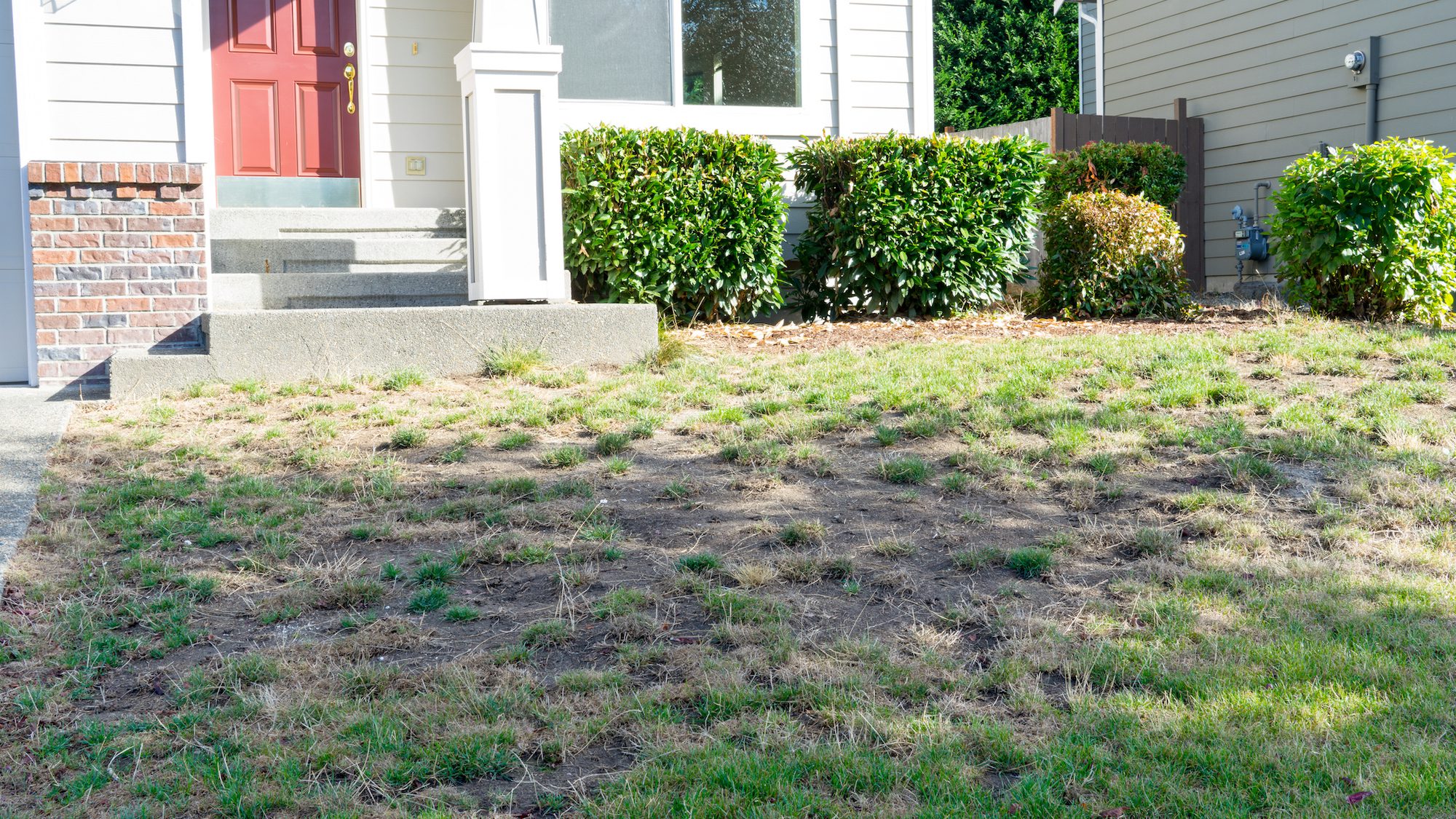
MarkHatfield/Getty Images
Fertilizing, watering, and mowing are the usual steps to take for a healthy lawn, but sometimes things can go awry. Unsightly weedy and brown patches can show up on your lawn and seriously undermine your home’s curb appeal.
Dealing with a damaged lawn can be a frustrating experience for homeowners. No matter how much water or fertilizer you apply, it can seem nearly impossible to get your lawn back to its thick, green splendor.
But it’s not just you! If it’s any consolation, you have plenty of company with your lawn care woes. A lawn care survey this year found that a majority of surveyed homeowners with lawns don’t have a handle on proper lawn care or how to get rid of weeds.
So if your lawn is looking a little worse for wear, get it back into shape with these expert tips.
Get rid of weeds ASAP to stop the spread
If you see a weed, pull it out by hand, making sure to remove the root.
“A regular weeding routine for the garden prevents weeds from multiplying and reseeding,” says Gladys Mbofung-Curtis, plant scientist for Garden Safe. “Applying a layer of mulch also helps stop weeds from growing in the garden. Make sure the mulch is seed-free in order not to introduce new weeds into the garden.”
If you’re unable to get a good grip on weeds, you can also use a wide range of specially formulated weed killers like Spectracide Weed Stop ($10, Home Depot).
Do a pull test on brown patches of grass
Brown patches on your lawn could mean you’re dealing with drought stress, or more serious problems like pests or fungus. Pull out a few blades of grass, and examine the roots for signs of insect root eaters or whitish branchlike structures, which can point to fungi growth.
“The most common garden and turf grass diseases are caused by fungi. Examples are powdery mildews, dollar spot, leaf spots, and rust,” says Ryan Eilermann, senior director of marketing at Spectrum Brands. “If the lawn or garden is well watered, fertilized, and drained, these diseases should be rare.”
He also recommends using insect killer ($7.48, Home Depot) for lawns and landscapes to control any pest outbreaks that could be tainting your grass.
Perform a soil test using a DIY kit
A good way to gauge what you’re dealing with is to get a DIY kit to test the pH level of your soil. This test is available at most garden centers.
“It is important to determine nutrient and pH state of your soil regularly, because grasses do not fare well in acidic soil conditions,” says Mbofung-Curtis.
If soil is acidic, with a pH of less than 7, lime can be added to the soil following the manufacturer’s instructions.
“Apply extra-fine limestone to neutralize the acidic patches of soil. Water the area to help disperse, and let it sit for a week,” says Mbofung-Curtis.
Reseed bare smaller areas of the lawn
Notice any patches on your lawn? They’re likely due to heavy traffic or insect or disease problems. The good news is those small spots of bare lawn can be reseeded.
“Before repairing patches, aerate the lawn wherever there is compaction and apply compost or starter fertilizers to help lawn growth,” says Mbofung-Curtis. “When covering patches with topsoil and seed, gently water the area with a garden hose, taking care not to wash off the seeds.”
Larger patches on your lawn should be covered with new pieces of sod.
Water reseeded or sodded areas
To maintain adequate moisture until grass seedlings germinate and are well rooted, it’s important to water reseeded or sodded areas.
“Water your lawn adequately early in the morning or evening to avoid dry spells or wet spells,” says Mbofung-Curtis. This will help it grow healthy and improve resiliency to pests and future damage.
The top inch of soil of a newly seeded lawn should be kept consistently moist—but not soggy. Once you see grass sprouts, keep the top 2 inches of soil moist until the grass grows high enough to mow. Then return to your regular watering schedule, making sure to soak the soil about 6 to 8 inches so the roots will grow deep and strong.
Fertilize patchy areas with a slow-release fertilizer
Those yellow or brown patches could mean you’re overfertilizing your lawn. Too much fertilizer salt can draw water away from plant roots and deprive the grass of moisture. And when your lawn can’t get the water it needs, it dries out.
To avoid fertilizer burn, experts recommend sowing patchy areas with a slow-release fertilizer that will give your lawn a limited amount of nutrients over time.
“Cool-season grasses should be fertilized in the fall, when they have optimum conditions for growth,” says Mbofung-Curtis. “Warm-season grasses are fertilized in spring, when the grasses grow best. You can also rake leaf litter or mow into lawn for added fertility.”
The post How to Restore a Lawn Plagued by Weeds or Brown Patches appeared first on Real Estate News & Insights | realtor.com®.
No comments:
Post a Comment